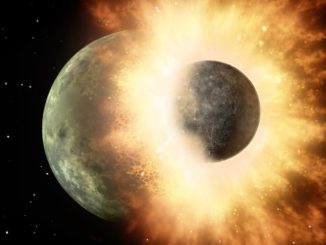Around 3.8 billion years ago, an asteroid more than 150 miles across slammed into the Moon and created the Imbrium Basin — the right eye of the fabled Man in the Moon. New research suggests an Imbrium impactor that was two times larger in diameter and 10 times more massive than previous estimates.
